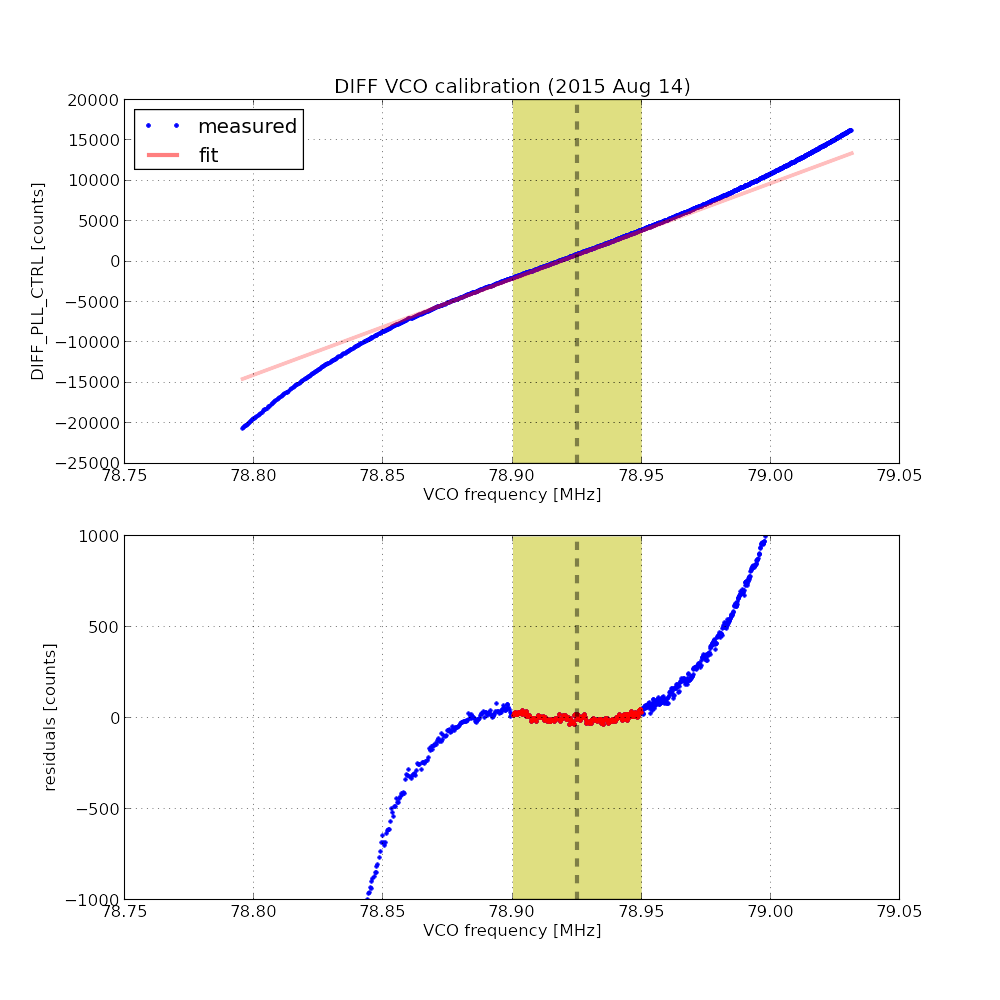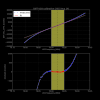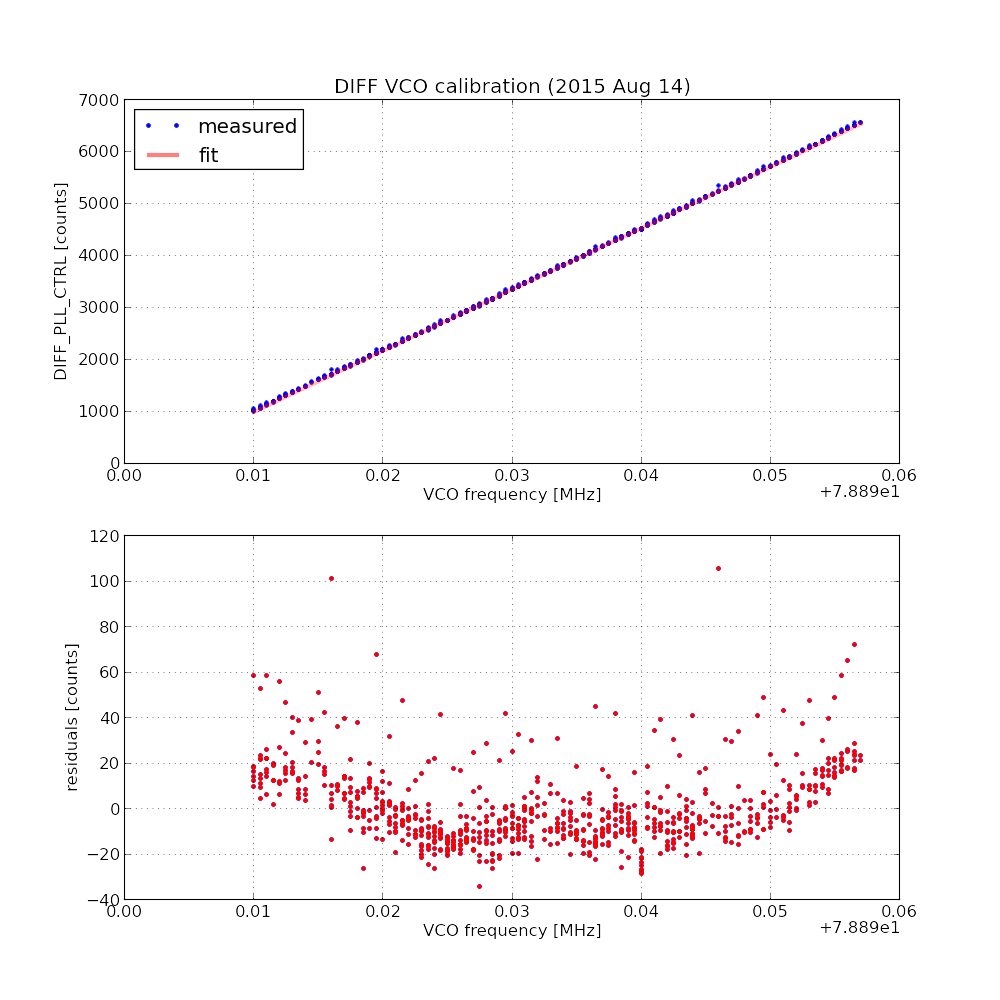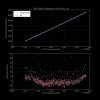J. Oberling, P. King
PMC Alignment
After the last week's temperature spike the transmitted power through the PMC had dropped (see alogs 20490 and 20504), today's goal was to fix it. First Peter attempted to adjust the temperature of the PMC, as it had not settled back to its original temperature from before the temp spike. See Peter's alog here for full details, but the short version is that temperature is such a slow actuator and we are so limited on time that we decided to go in and adjust the beam alignment into the PMC.
With the ISS off we tweaked mirrors M06 and M07. Pitching M06 down slightly gained us the lost PMC transmission. Walking the beam slightly up and down in pitch and left and right in yaw did not improve the transmitted power, so after re-locking the adjustment screws we had:
-
PMC_TRANS: 25.2 W
-
PMC_REFL: 1.8 W
We checked the centering on the PMC_TRANS PD and after a very slight adjustment to mirror M36 the transmitted power increased slightly to 25.29 W. We measured the visibility of the PMC:
-
Unlocked: -1.51 V
-
Locked: -0.129 V
-
Visibility: 14.6%
With the ISS on:
-
PMC_TRANS: 25.1 W
-
PMC_REFL: 1.79 W
We then measured the transmitted PMC power and the power after the ISC EOM with a power meter.
-
PMC transmission: 25.0 W
-
After ISC EOM (after IO_MB_WG1): 23.6 W
The power out of the ISC EOM is displayed on the IMC Overview MEDM screen, in the lower left corner. On the PSL table this is IO_AB_PD3. It read 25.81 W, so this needs recalibration. We blocked the PD and saw 0.175 W on the MEDM screen, so there is some offset we need to remove as well.
O1 Prep
We turned off all the computers inside the enclosure and removed the 1 cordless phone (it is currently sitting on the desk on the west side of the H1 PSL enclosure next to the PSL electronics rack). We shut off the DBB electronics in prep for O1; these will need to be turned back on if we want to run DBB scans during Tuesday maintenance. Once done in the LVEA we asked Richard to turn off power to the clean room phone located in the PSL enclosure. All HEPA fans for the enclosure are off, as well as both air conditioners. The make-up air is set to 20%, and this was confirmed by listening to the fan (it is located in the old chiller closet on the east side of the H1 PSL enclosure).
IO_AB_PD3 Recalibration
J. Oberling, P. King, C. Vorvick
We recalibrated IO_AB_PD3. To remove the measured 0.175 W of offset we set the offset value on the filter screen to -77.0 (440 counts/W with a gain of 1). We then set the gain to 0.916 to get the MEDM window to match our power measurement. If we want more power from the PSL our only course now is to increase the front end diode currents.


















